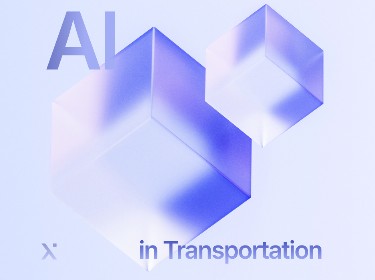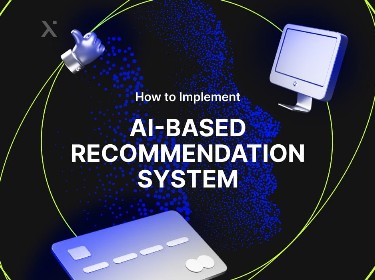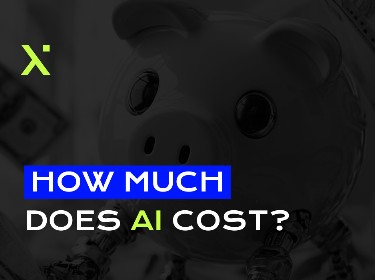Traditional methods for detecting money laundering have become outdated in our global, web-based economy. That’s why we need to add ML to AML: it gives us a unique opportunity to take anti-money laundering efforts to the next level.
While it can be tricky to gauge the impact and scale of money laundering, the United Nations Office on Drugs and Crime (UNODC) reports that the amount of money laundered globally in a single year is between 2-5% of global GDP, or $800 billion – $2 trillion in current US dollars.
However, perpetrators constantly adopt ever more sophisticated new techniques in today’s global, web-based economy. According to the US Treasury Department, the total value reported in ransomware-related Suspicious Activity Reports (SARs) during the first six months of 2021 was $590 million, exceeding the value reported for the entire year 2020 ($416 million).
Read on to find the pros and cons of using machine learning in anti-money laundering and learn more about real-life application of ML for AML.
If you’re looking to gain a comprehensive understanding of the role of machine learning in anti-money laundering, watch our PixelPlex video guide.
Our experts will share useful insights into how machine learning is transforming the landscape of anti-money laundering, safeguarding financial systems, and preserving the integrity of our global economy.
Traditional AML solutions: challenges and current state
Traditionally, many financial institutions use rule- and scenario-based tools or basic statistical approaches to monitor transactions for money laundering.
These rules and thresholds are driven primarily by industry red flags, basic statistical indicators, and expert judgment. However, the rules often fail to capture the latest trends in money laundering behavior. Customer and criminal behaviors are changing rapidly, so we need to be agile.
For their part, anti-money laundering machine learning models leverage more granular, behavior-indicative data to build sophisticated algorithms. They are also more adaptable in quickly reacting to new patterns and constantly improving over time.
However, a rules-based system’s rapid adaptability is also one of its flaws. Even with highly complex rules-based triggering logic, the output is usually binary: either the action triggers an alarm, in other words a referral for investigation, or it does not.
Many compliance officers and analysts are thus required to cover the tedious process of examining every transaction for which the system generates an alert.
In addition, due to the manual labor involved, traditional solutions are difficult to scale, which in turn leads to customer frustration and a diminution in the overall customer experience.
Old money laundering patterns are no longer viable. So a change in the screening process is required, in the form of an anti-money laundering machine learning procedure. With the global anti-money laundering software market reaching $4.09 billion by 2025, meaning a growth rate of 14.12% during the forecast period 2020-2025, you would be wise not to be left behind.
Find out how machine learning can be applied in the FinTech industry
What are the advantages and disadvantages of using machine learning in anti-money laundering?
Let’s take a look at some of the key benefits and limitations of using machine learning in anti-money laundering.
![]()
Advantages
Improved Transaction Monitoring
An AML machine learning solution can learn and identify complex transaction patterns using historical data. While money laundering schemes change over time, the system can adapt to the new reality by automatically incorporating further information and identifying almost any new transactional pattern.
Moreover, during the monitoring process, ML algorithms help eliminate the rate of false positives by using semantic analysis and statistical analysis to identify the risk factors that lead to actual positive results.
Unstructured and external data analysis
Machine learning algorithms for AML provide comprehensive management and analysis of unstructured data, which is necessary for AML compliance. For example, banking and financial institutions analyze customer data such as country of residence, profession, politically exposed person (PEP) status, and social status to check their behavior. These are some of the main factors and relevant statistics that help businesses reduce financial risk.
Detecting changes in customer behavior
In a similar fashion to transaction monitoring, we can use machine learning in AML to model each customer’s transactional behavior.
Using techniques such as natural language processing (NPL), we can recognize patterns related to suspicious users/accounts and classification of alertness based on the risk types.
Detecting high-risk consumers
Another critical aspect of machine learning in AML is the ability to group similar entities based on certain characteristics through cluster analysis. The customers themselves could be these entities. High-risk consumers will be grouped together if the appropriate qualities are chosen during this process.
The classification can provide a simple, quick and automated technique to identify high-risk customers accurately.
Disadvantages
Data quality management
The first and foremost limitation to note is the quality of the data fueling the system.
Data Quality Management (DQM) is required for all monitoring systems and analytics. It is not unique in any way to AML machine learning applications. However, data management continues to be a significant challenge for the following reasons:
- Data must be merged, cleansed, and deduplicated from many management systems. This is necessary in order to obtain a 360-degree view of clients.
- Redundant data and back-end systems are hampering the building of consumer profiles.
- Poor data quality makes it harder to resolve entities, detect links, and assess client risks.
Limited comprehension
Another issue is that most machine learning algorithms act as black boxes. For example, questions like “Why did the algorithm designate this particular transaction as risky?” will likely go unanswered. However, some algorithms may provide a naive explanation of which features they consider essential overall.
It is also worth noting that this absence of explanation clashes with regulators’ demands. If the compliance team cannot document their decisions, it is rather difficult to pass unnoticed by the regulators. In the regulators’ view, the models should be developed to allow results to be recreated using the same input data. Since machine learning systems are typically highly complicated, this is not always possible.
Computing Resources
Machine learning algorithm (re)training and tweaking typically demands a vast number of computations. As the volume of data increases, so do the computational resource requirements. In fact, special consideration should be given to determine whether the cost of maintaining such resources is feasible.
Meet AIRA — AI-based retina analysis and diagnosis tool developed by PixelPlex
What are machine learning applications in anti-money laundering?
![]()
The following new technologies, among others, can be supported in AML devices:
Transaction Monitoring
The potential applications of ML technology within fraud monitoring and transaction monitoring (TM) are vast.
A common TM challenge is the generation of many alerts, which require costly operations teams to triage them all. However, in leveraging ML at the alert triage stage, we can reduce the rate of false positives via:
- Statistical analysis of customer information to identify high-risk entities likely to represent a true positive result. Additionally, these results can be reintroduced into the system to eliminate potential false positives during the next transaction monitoring.
- Semantic analysis to detect correspondences created by redundant data.
Automate KYC tasks
Robotic process automation (RPA) can be combined with artificial intelligence techniques to automate “Know Your Customer” tasks. Among its applications, we can highlight the following:
- Creating customer views across all accounts by aggregating internal customer data, including data deduplication and reconciliation across several back-end systems.
- Information gathering and assembling from relevant external data sources to develop client profiles. Moreover, external and internal data can be used to enhance alerts.
Manage regulatory reporting
Machine learning algorithms for AML can also increase regulatory reporting efficiency, which is a delicate point in the process. RPA can populate regulatory reporting formats with existing data and archive reports electronically.
The automated generation of regulatory reports is already an established feature of traditional reporting modules in Know Your Customer, Know Your Transaction, and anti-money laundering tools.
However, the limitation of these systems lies in the narration of the suspicious activity report written by analysts. Natural language generation (NLG) advances, through which computers process human language, now allow relevant information about detected cases to be gathered in a coherent narrative.
Leveraging machine learning in AML can reduce reliance on human operators to perform routine tasks, reduce the total time it takes to triage alerts, and allow personnel to focus on more valuable and complex activities.
Check out this ML-based intellectual property protection service developed by PixelPlex
Closing thoughts
As an integral element in anti-money laundering, machine learning ensures accuracy and improves the performance of many tasks by processing historical input data. However, while your enterprise data can do much more than you imagine, the huge amounts of structured and unstructured data towering are badly hampering progress.
We at PixelPlex understand what needs to be done. With years of field experience, we can nail complex effort-intensive jobs faster. From NLP to automated machine learning and predictive analytics, we approach resource-consuming tasks much more efficiently.
By implementing machine learning consulting and development, we’ll help you easily execute complex iterative operations.




